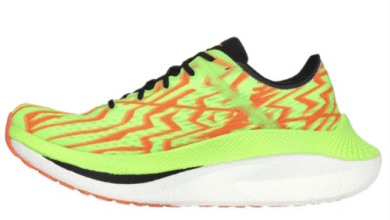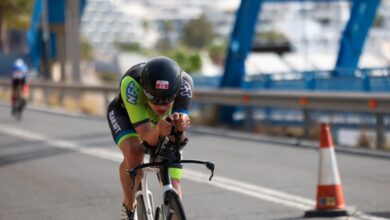Tips for not making mistakes in a Duathlon / Triathlon

Now that we are almost at Christmas and planning the new season that comes, it is time to remember the basic notions of the regulations for when the competitions arrive. The same thing always happens to us, we only think about training and we don't look at the regulations.
To facilitate this, the following article tells in a very general way the most common mistakes that triathletes have in short distance competitions. It will also be useful so that people who are getting hooked on triathlon can serve as a reference to face their first competition in the most correct way.
To begin with, we started talking about the sanctions that we can receive in the competition. These sanctions are shown by the judges through the use of cards and will be colored yellow and red.
- 1 yellow card equals a warning.
- 2 yellow cards equal a disqualification. This means that you can continue in the race but under your responsibility and you will not leave in the classifications.
- Red card, it's elimination. It is for a very serious cause. This sanction can be shown for doing something that endangers another person, disrespect for the judges, triathlete, public, etc. or that you take any action that affects the results of the competition. You cannot continue in the race and you have to leave the competition immediately.
Use of numbers:
What about the numbers in races? Sometimes we are not sure if we have placed them, fine but later we see the judges whistling and warning the triathletes to be able to see the number.
Then we can see how to use the number in each segment
- Swimming: It is not allowed to put it in the water.
- Cycling: Its use is mandatory and must be visible from the athlete's back.
- Race: Its use is mandatory and must be visible from the front of the athlete.
And the marking of the number in the body?
This little by little tends to eliminate competition.
Another point that is not clear is the couplings and handlebars of the bicycle.
The regulation is very strict at that point (Tests with Drafting).
- Only traditional curve handlebars are allowed, and properly plugged (this may leave you out of the competition)
- Couplings are allowed as long as they do not exceed the vertical plane determined by the outer ends of the brake levers
- If couplings are used, they must be faced at the ends
- It is not allowed to carry changes at the end of the coupling, except for the changes of the "grip-shift" system
- The use of armrests is allowed
Wheel:
Currently. There is a wide variety of wheels in the market and as they have lowered their price a little, more and more triathletes acquire some to compete. These are the guidelines that we need to know:
- In competitions with drafting allowed
- The wheels must have at least 12 radios
- They can not have mechanisms that facilitate their acceleration
- Each wheel has to have a brake.
- For competitions in which it is not allowed to go to a wheel, the wheels may not have mechanisms that facilitate their acceleration and the rear wheels will admit being covered
Compression socks
Another widespread doubt in triathlons are compression socks. In the water they are allowed only if you swim with neoprene (those should always be below the neoprene).
If the competition does not allow the use of neoprene, its use is not allowed.
In the race and cycling segments are allowed (although you may have to put them in the pits)
These are the most common sanctions in the race:
Cycling Sector:
- In Elite and / or Elite / Sub23 competitions, the doubled runner is eliminated
- In Open competitions or by Age Groups, runners with a lost lap can not go to the previous lap in a round
- It is not allowed to go to wheel between athletes of different sex
- You can not drive without a helmet
Transitions:
- You can not take the bicycle without having the helmet properly put on and fastened
- It is not possible to leave the bicycle without having the helmet correctly put on and fastened
- It is forbidden to bring headphones, mobile phones, video cameras, photo or similar or glass containers
Race on foot
- It is forbidden to bring headphones, mobile phones, video, photo or similar cameras or glass containers
- You can not run barefoot
- You can not use fences, trees, lampposts or any other fixed element, to maneuver in curves
- You can not run with the helmet.
I hope I have helped and clarify any of the doubts that may have arisen in the competition, I take this link to the website of the Spanish Triathlon Federation, where you can download the complete regulation.
AM
2/12/2010
There are no previous results.




























